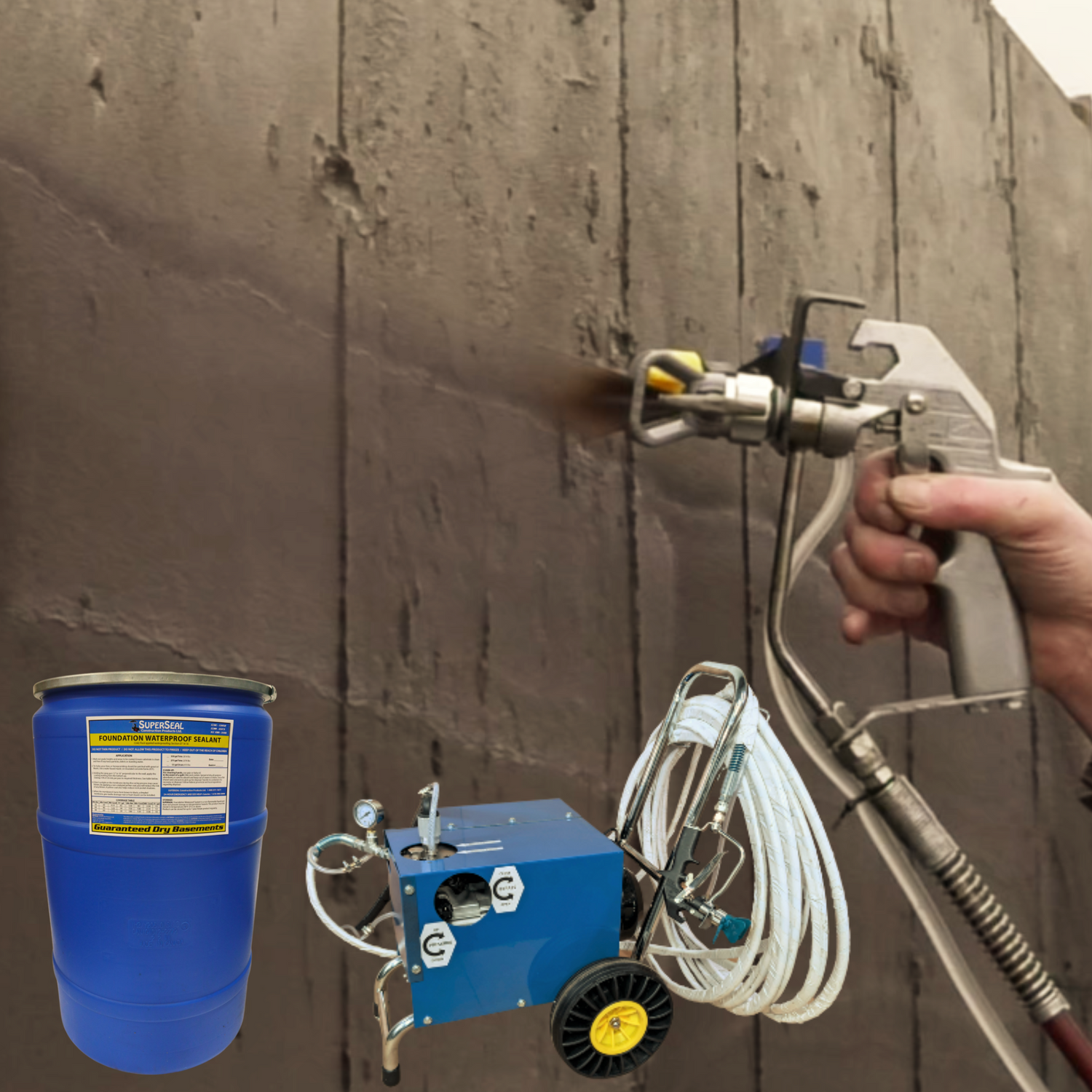LEARNING CENTER
Your Guide for Residential and Commercial Applications.
LEARNING CENTER
The SUPERSEAL Learning Center is your guide to help homeowners, DIYers, builders, and engineers understand residential and commercial waterproofing and construction in today’s market. It covers everything from how foundations are built to the different types of basement waterproofing systems used in each project.
Included topics:
- Types of Foundations – Full basements, crawl spaces, and slab-on-grade designs.
- Foundation Building Materials – Poured concrete, ICF, and concrete block.
- Basement Waterproofing Types – The differences between exterior and interior systems, coatings, and drainage membranes.
- Residential and Commercial Applications – How waterproofing methods vary between home construction, multi-unit buildings, and large-scale commercial projects, including shotcrete and blind wall applications.
- Concrete Subfloors – How to protect basement flooring and what to watch out for during installation.

Basement Waterproofing
This page teaches about the different types of exterior basement waterproofing methods. This includes waterproof coatings, dimpled membranes, and complete systems for below-grade protection.

Types of Construction Explained
Understanding the different types of residential and commercial construction can be confusing. Learn more about the 4 main types of construction and different classifications.

Dimpled Membranes
Dimpled Foundation Membranes or Drain Boards can be used in a variety of applications. This page teaches about what they are, how they work, and areas of application.

Interior Basement Waterproofing
In many homes across North America, older homes use an interior basement waterproofing method. Installed on the inside of your foundation walls. This page details more about installing this type of system and why it's commonly used..

Waterproof Coatings
Waterproof coatings can be used for residential, light commercial and large commercial applications. This page talks about the difference between instant-set waterproofing and roller grade waterproofing. It also explains what waterproofing coatings are, how they work, and areas of application.

Drainage Mats
Drainage mats are a dimpled plastic sheet with a filter fabric bonded to one side. They are usually installed with a waterproof coating on large residential and commercial projects. On this page you will learn about what they are, where they are used, and the benefits to a drainage mat system.

Commercial Applications
Commercial projects require heavy duty drainage for demanding site such as parkades, blind wall systems, shotcrete shoring, green roof / flat roof systems are more. On this page you will learn more about the types of systems and products required.

The Role of Architects and Engineers
Engineers and architects are central to every construction project and prepare specifications, select materials, and ensure projects meet building codes and environmental standards.

Insulated Concrete Forms (ICF)
ICF foundations (Insulated Concrete Form foundations) are made from foam, filled with concrete and provide superior insulation. This makes them a popular choice especially in colder climates. This page talks about the benefits, how they are installed and what type of basement waterproofing they require.

Concrete Subfloors
All homes with half basements, full basements, or any part of the home below grade will have a concrete subfloor base.
When installing carpet or laminate flooring in the basement, the proper type of protection and underlayment is required. This page talks in detail about the types of underlayments and the benefits to your flooring.
The Most Popular Questions

What’s the difference between exterior and interior basement waterproofing?
Exterior basement waterproofing
Exterior waterproofing uses waterproof coatings, dimpled membranes, and proper drainage on the outside of the foundation. This stops water before it reaches the basement wall.
Interior basement waterproofing
Interior waterproofing is mostly used in older homes, retrofits, or full renovations. It manages water after it enters the basement by directing it into a drainage system or sump pump.
Do I need a dimpled membrane and a waterproof coating?
Waterproof coating
A waterproof coating seals the surface of the foundation wall and helps block moisture. On its own, it provides protection but can still be affected by soil pressure, cracks, or movement.
Dimpled membrane
A dimpled membrane (drain board) adds a long-lasting air gap that moves water safely down to the drainage system.
Using a waterproof coating and a dimpled membrane together creates the strongest and most reliable waterproofing system for your home.
How do drainage mats work on commercial walls?
What drainage mats do
Drainage mats are a dimpled membrane with a filter fabric heat fused to one side. The create a gap between the soil and the waterproofing system on large concrete or shotcrete walls. This gap lets water move down and away instead of getting trapped against the wall.
Role of the filter fabric
The filter fabric keeps soil and fine materials from clogging the drainage channels. It allows water to pass through while protecting the drainage core so it continues to flow freely.
Why they’re used
Drainage mats reduce pressure on the waterproofing layer and help keep commercial structures dry. They are commonly used in townhouse, duplex and large commercial projects.
Do I need special waterproofing for ICF foundations?
Why ICF needs specific products
ICF blocks are made of foam, so the waterproof coating must bond properly to the foam surface. Not all coatings are compatible, and solvent-based products can damage the foam.
ICF-Compatible coatings
ICF foundations require water-based waterproof coatings that are specifically designed for foam. These coatings adhere safely without harming the block and create a proper waterproof seal.
Best practice
For the strongest protection, use an ICF-compatible water-based coating together with a dimpled membrane. This seals the foam, protects the wall, and helps prevent water from entering through seams or fastener points.
